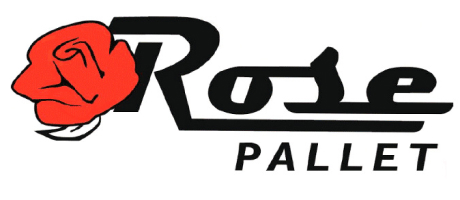Essential Pallet Safety Training: Best Practices for Handling and Transport
Working with pallets on a daily basis can often feel monotonous and routine, but ensuring each pallet is being handled with the utmost safety is crucial. Naturally, you don’t want your employees to be injured or exposed to dangers while working with pallets, but you also don’t want your inventory of pallets to be significantly reduced due to accidents.

Working with pallets on a daily basis can often feel monotonous and routine, but ensuring each pallet is being handled with the utmost safety is crucial. Naturally, you don’t want your employees to be injured or exposed to dangers while working with pallets, but you also don’t want your inventory of pallets to be significantly reduced due to accidents. To that end, learn the following four essential pallet safety training tips to avoid the above.
4 Pallet Safety Tips to Implement in the Workplace
The absence of specific pallet safety OSHA standards is a notable gap in workplace safety regulation. This regulatory void leaves many businesses navigating a complex landscape of safety guidelines primarily governed by the American National Standards Institute (ANSI) standards, alongside internal protocols and industry best practices. Here are a few tips to keep your team safe while handling pallets, pallet racking, and pallet jacks.
1. Establish Internal Pallet Safety Protocols
In any workplace, clear protocols and guidelines are essential for ensuring safety. When it comes to handling pallets, establishing specific protocols can greatly reduce the risk of accidents and injuries in your warehouse. Begin by creating standardized procedures for tasks such as stacking, loading, and unloading pallets, as well as operating pallet jacks. These protocols should entail proper lifting techniques, safe stacking heights and weights, and methods for securing loads onto pallets safely.
Additionally, designate specific areas in your facility for pallet racking, staging, and storage. Ensure that these zones are clearly marked with floor markings, and that pallets are kept clear of aisles and pathways. Regularly review and update these protocols as needed to address any emerging safety concerns or changes in workflow.
2. Pallet Stacking Safety Essentials
As part of your internal pallet safety protocols, set weight and height limits for pallet stacking safety. Also, set standards for pallet stacking patterns, such as block stacking, column stacking, or interlocking stacking to optimize space in your warehouse and minimize the risk of collapse.
- Weight and Height Limits: Determine weight and height limits for pallet stacking to prevent overloading and instability. These limits should be based on the load-bearing capacity of both the pallets and racking.
- Stacking Patterns: Define standardized pallet stacking patterns to optimize space utilization and maintain stability.
- Securing Methods: Finally, establish protocols for securing pallet stacks to prevent shifting, tipping, or falling. Common practices include strapping pallets together and shrink wrapping them.
3. Hold Regular Safety Training for Employees
Effective training is fundamental to promoting pallet safety within your organization. Ensure that each and every employee who handles pallets receives comprehensive training on proper handling techniques, equipment operation, hazard recognition, and machinery certifications as outlined by OSHA. These training sessions should include topics such as:
- Safe lifting and carrying techniques to prevent strain and injury
- Proper use of equipment such as forklifts, pallet jacks, and strapping machines
- Identification of potential hazards such as protruding nails, damaged pallets, or unstable loads
- Emergency procedures in the event of accidents
Provide hands-on training as well as refresher courses to your employees to reinforce safety protocols and address any gaps in knowledge or skills. Encourage open communication between your employees and supervisors to report safety concerns immediately if they arise.
4. Regularly Reassess Your Safety Program
Continuous improvement is key to enhancing pallet safety within your organization. Regularly assess your existing safety protocols, training programs, and equipment to identify areas of improvement. Take the time to solicit feedback from employees regarding their experiences and observations related to pallet handling, then use this input to refine your safety initiatives.
Take the time to also consider implementing technologies or automation solutions that can enhance the efficiency and safety of pallet handling operations. For example, automated pallet stacking systems can reduce the manual labor involved in pallet storage and retrieval, while RFID tracking systems can help monitor pallet movement and identify potential issues in real time.
Bolster Safety in Your Facility
By continually striving to enhance pallet safety through proactive measures and ongoing evaluations, you can create a safer work environment for your employees and minimize the risk of accidents and injuries associated with pallet handling. If your business is in need of pallets or advice regarding building out safety protocols for handling those pallets, contact Rose Pallet!












